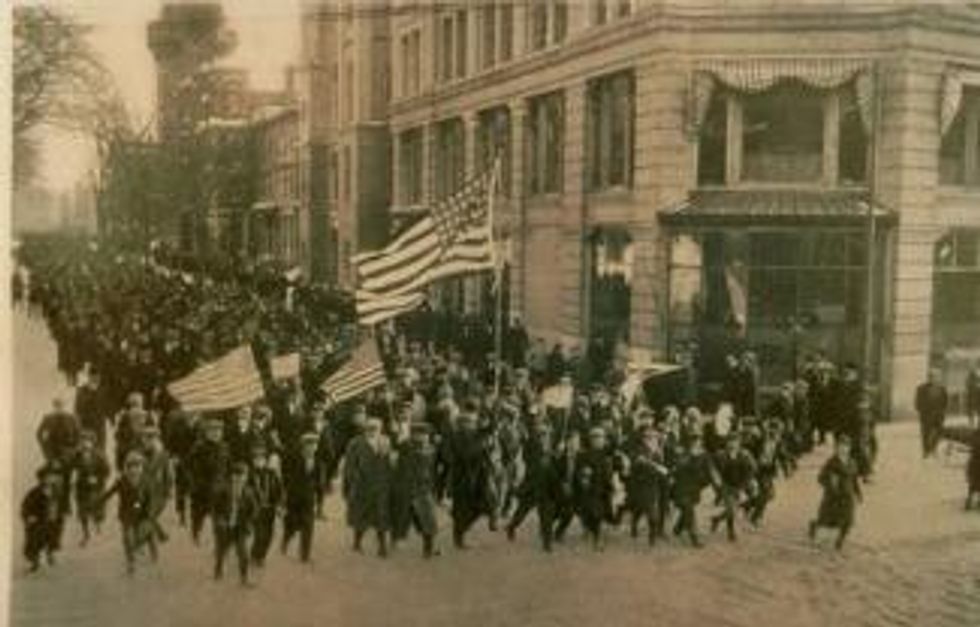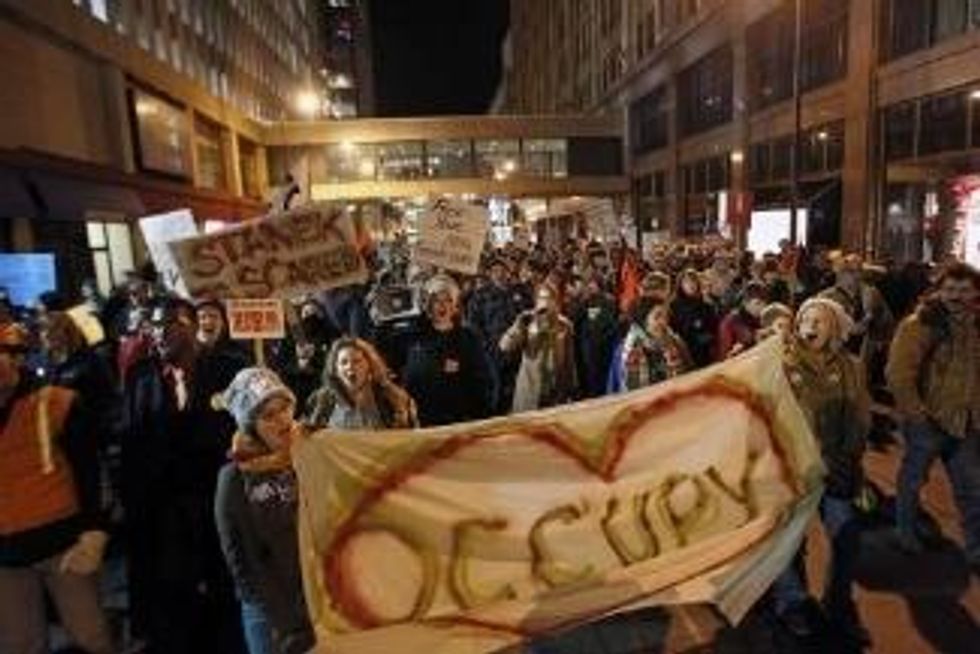On 100 Year Anniversery of 'Bread and Roses' Strike, Many Draw Connections to Today's Hurdles
January 12, 2012 will be the 100 year anniversary of the 'Bread and Roses' textile workers Strike in Lawrence, Mass. The dire conditions leading up to the strike remind some of the current socio-political climate and offer lessons for workers' struggles today.
The Boston Globe reports today:

The action, known as the Bread and Roses Strike, not only called attention to horrific conditions in the mills, but also to the concentration of wealth and power in the United States, an issue that 100 years later would spur protesters to Occupy Wall Street, Boston, and other cities across the country.
The essence of the Lawrence strike resonates loudly in today's Main Street vs. Wall Street fight, with income disparities brought to light by the 1912 walkout reexamined through the lens of high unemployment, a shrinking middle class, and the view that most economic benefits have flowed to the wealthiest Americans. [...]
The desperation that drove poor textile workers to abandon their jobs for the picket lines is echoed in the frustration that drove people to camp out in financial districts across the country.

James Green, a labor historian at UMass Boston, sees similarities to the 1912 uprising in many recent events, not only in the Occupy movement but in the Tea Party, the aggressive tactics of striking Verizon workers last summer, and customers railing against new Bank of America fees.
Steve Early recently examined contemporary Lawrence for In These Times:
An Urgent Message From Our Co-Founder
Dear Common Dreams reader, The U.S. is on a fast track to authoritarianism like nothing I've ever seen. Meanwhile, corporate news outlets are utterly capitulating to Trump, twisting their coverage to avoid drawing his ire while lining up to stuff cash in his pockets. That's why I believe that Common Dreams is doing the best and most consequential reporting that we've ever done. Our small but mighty team is a progressive reporting powerhouse, covering the news every day that the corporate media never will. Our mission has always been simple: To inform. To inspire. And to ignite change for the common good. Now here's the key piece that I want all our readers to understand: None of this would be possible without your financial support. That's not just some fundraising cliche. It's the absolute and literal truth. We don't accept corporate advertising and never will. We don't have a paywall because we don't think people should be blocked from critical news based on their ability to pay. Everything we do is funded by the donations of readers like you. Will you donate now to help power the nonprofit, independent reporting of Common Dreams? Thank you for being a vital member of our community. Together, we can keep independent journalism alive when it’s needed most. - Craig Brown, Co-founder |
January 12, 2012 will be the 100 year anniversary of the 'Bread and Roses' textile workers Strike in Lawrence, Mass. The dire conditions leading up to the strike remind some of the current socio-political climate and offer lessons for workers' struggles today.
The Boston Globe reports today:

The action, known as the Bread and Roses Strike, not only called attention to horrific conditions in the mills, but also to the concentration of wealth and power in the United States, an issue that 100 years later would spur protesters to Occupy Wall Street, Boston, and other cities across the country.
The essence of the Lawrence strike resonates loudly in today's Main Street vs. Wall Street fight, with income disparities brought to light by the 1912 walkout reexamined through the lens of high unemployment, a shrinking middle class, and the view that most economic benefits have flowed to the wealthiest Americans. [...]
The desperation that drove poor textile workers to abandon their jobs for the picket lines is echoed in the frustration that drove people to camp out in financial districts across the country.

James Green, a labor historian at UMass Boston, sees similarities to the 1912 uprising in many recent events, not only in the Occupy movement but in the Tea Party, the aggressive tactics of striking Verizon workers last summer, and customers railing against new Bank of America fees.
Steve Early recently examined contemporary Lawrence for In These Times:
January 12, 2012 will be the 100 year anniversary of the 'Bread and Roses' textile workers Strike in Lawrence, Mass. The dire conditions leading up to the strike remind some of the current socio-political climate and offer lessons for workers' struggles today.
The Boston Globe reports today:

The action, known as the Bread and Roses Strike, not only called attention to horrific conditions in the mills, but also to the concentration of wealth and power in the United States, an issue that 100 years later would spur protesters to Occupy Wall Street, Boston, and other cities across the country.
The essence of the Lawrence strike resonates loudly in today's Main Street vs. Wall Street fight, with income disparities brought to light by the 1912 walkout reexamined through the lens of high unemployment, a shrinking middle class, and the view that most economic benefits have flowed to the wealthiest Americans. [...]
The desperation that drove poor textile workers to abandon their jobs for the picket lines is echoed in the frustration that drove people to camp out in financial districts across the country.

James Green, a labor historian at UMass Boston, sees similarities to the 1912 uprising in many recent events, not only in the Occupy movement but in the Tea Party, the aggressive tactics of striking Verizon workers last summer, and customers railing against new Bank of America fees.
Steve Early recently examined contemporary Lawrence for In These Times:

